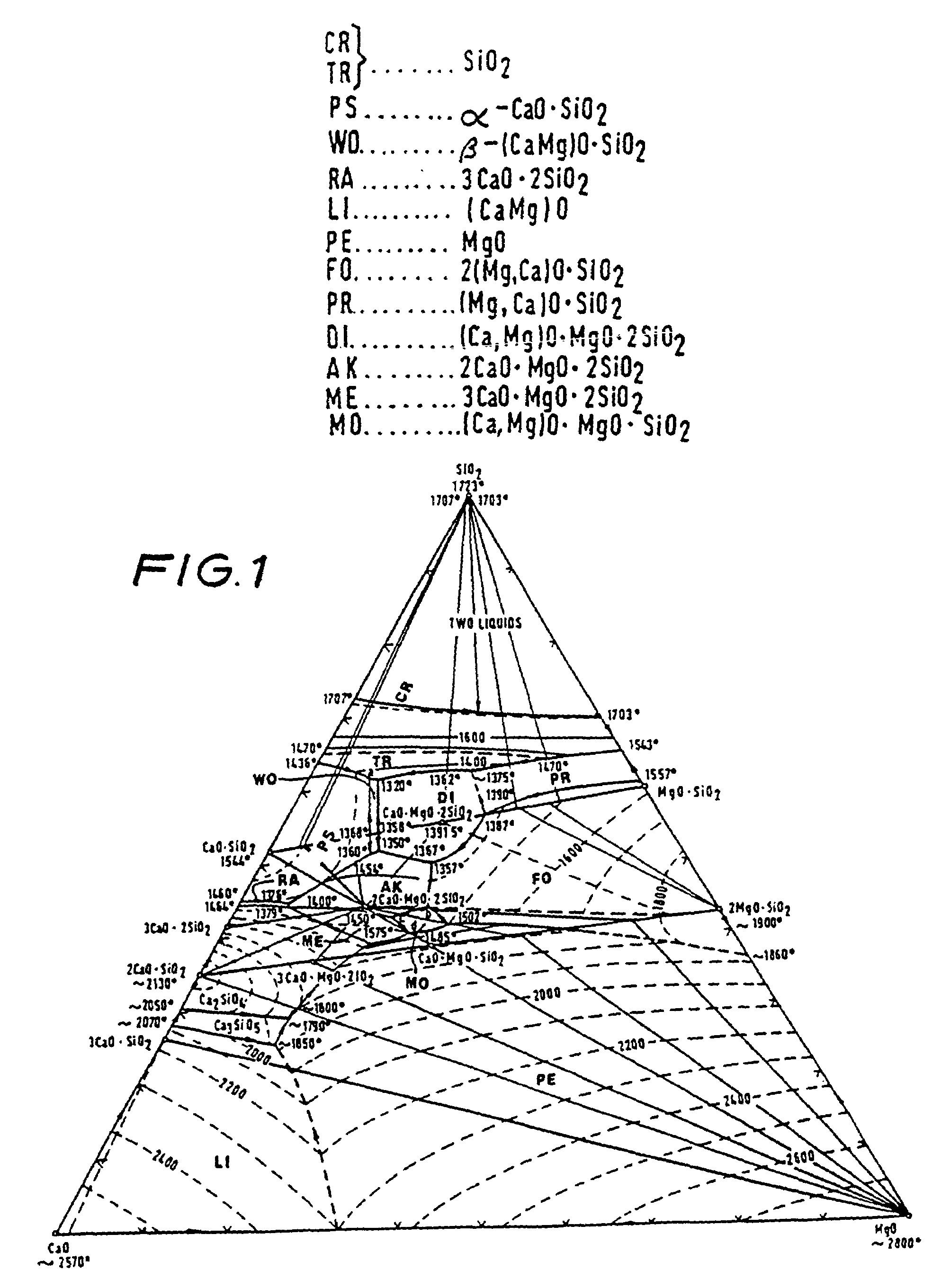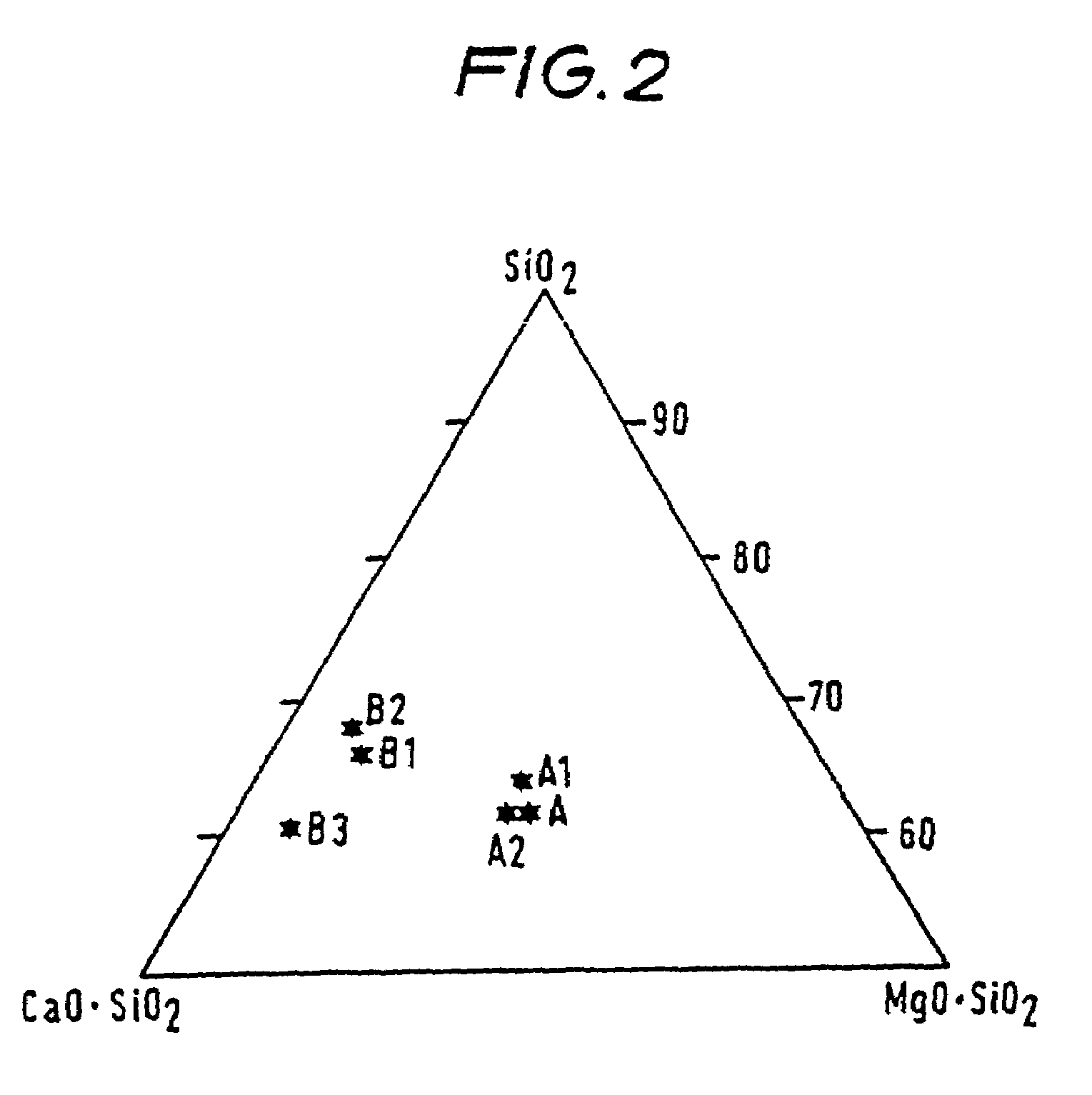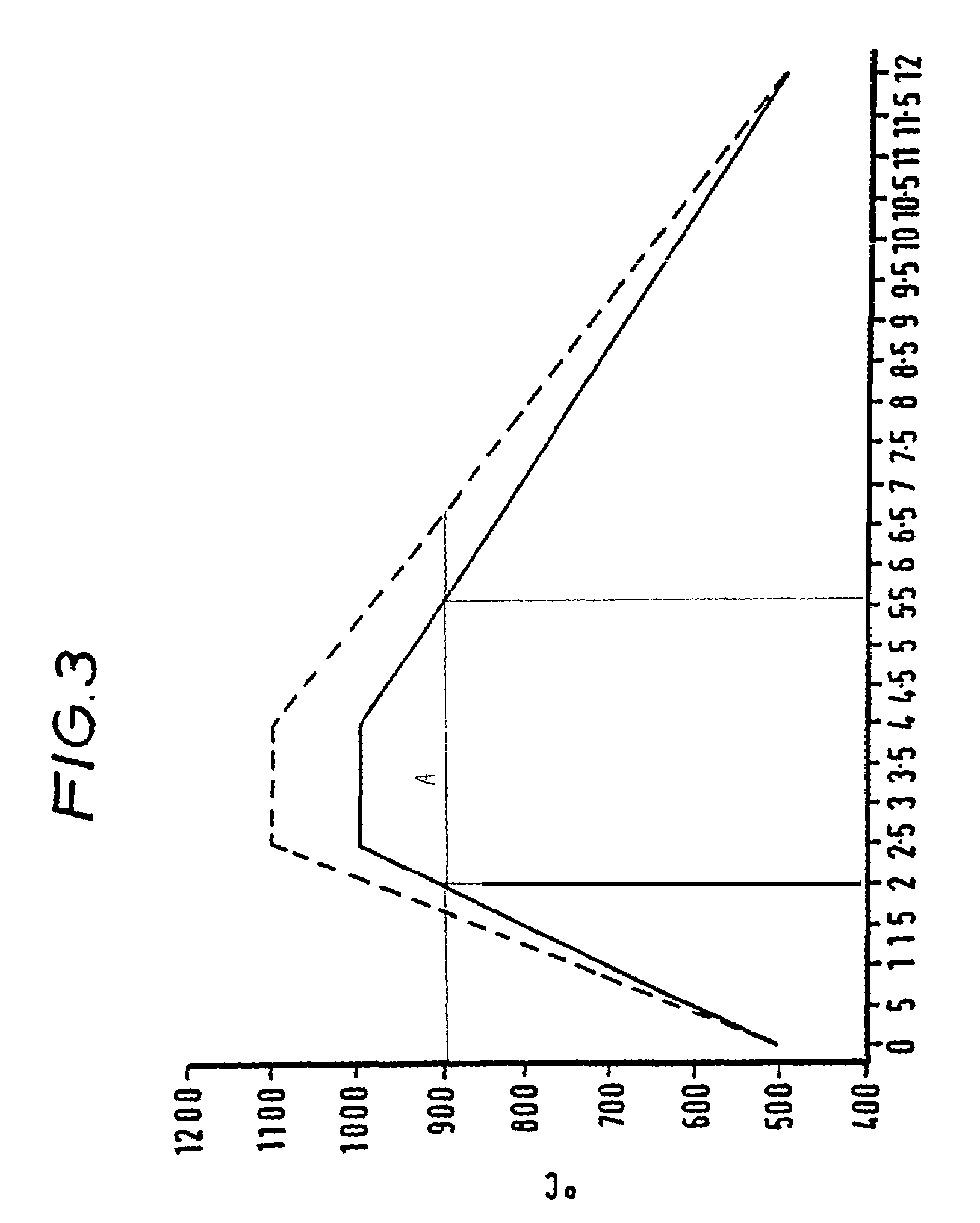Saline soluble inorganic fibers
a technology of inorganic fibers and soluble saline, which is applied in the field of saline soluble inorganic fibers, can solve the problems of asbestos being extremely insoluble, no real substitute, and affecting the health of people,
- Summary
- Abstract
- Description
- Claims
- Application Information
AI Technical Summary
Benefits of technology
Problems solved by technology
Method used
Image
Examples
Embodiment Construction
[0050]A series of fibres were made of the compositions shown in Table 1. These fibres were melt spun by using a vertical spinning system of the type known for making inorganic fibres. Also shown in Table 1 are the compositions of some comparative commercially available inorganic oxide fibres and glass fibres.
[0051]
TABLE 1Al2O3SiO2CaOMgOZrO2MSTSW-A3.359.320.515.5—SW-A11.163.720.515.2—SW-A20.860.821.415.4—SW-B12.365.326.85.7—SW-B21.366.927.55.2—SW-B31.060.034.04.4—COMPARATIVE EXAMPLESCRBT46.5530.040.01—1260° C.CWBT40.649.55.504.00— 870° C.CHBT49.735.10.040.0114.71425° C.Glass15.2 / 53.7 / 21.1 / 1.3 / ——+5.9–6.2% B2O3Fibre15.557.521.81.60.11–0.12% TiO20.46% Na2O0.32–0.33% K2ONeedled3.760.5 / 8.14.0——+2.85–2.95% B2O3Glass60.07.9—13.5% Na2OFibre1.0% K2O[MST = Maximum Service Temperature (oxidising atmosphere)]
[0052]The fibres SW-A, SW-A1, SW-A2, SW-B1, SW-B2 and SW-B3 were tested for solubility by the following method.
[0053]The fibre was first chopped in the following manner. 2.5 g of fibre (desh...
PUM
| Property | Measurement | Unit |
|---|---|---|
| temperatures | aaaaa | aaaaa |
| temperatures | aaaaa | aaaaa |
| temperature | aaaaa | aaaaa |
Abstract
Description
Claims
Application Information
 Login to View More
Login to View More - R&D
- Intellectual Property
- Life Sciences
- Materials
- Tech Scout
- Unparalleled Data Quality
- Higher Quality Content
- 60% Fewer Hallucinations
Browse by: Latest US Patents, China's latest patents, Technical Efficacy Thesaurus, Application Domain, Technology Topic, Popular Technical Reports.
© 2025 PatSnap. All rights reserved.Legal|Privacy policy|Modern Slavery Act Transparency Statement|Sitemap|About US| Contact US: help@patsnap.com



